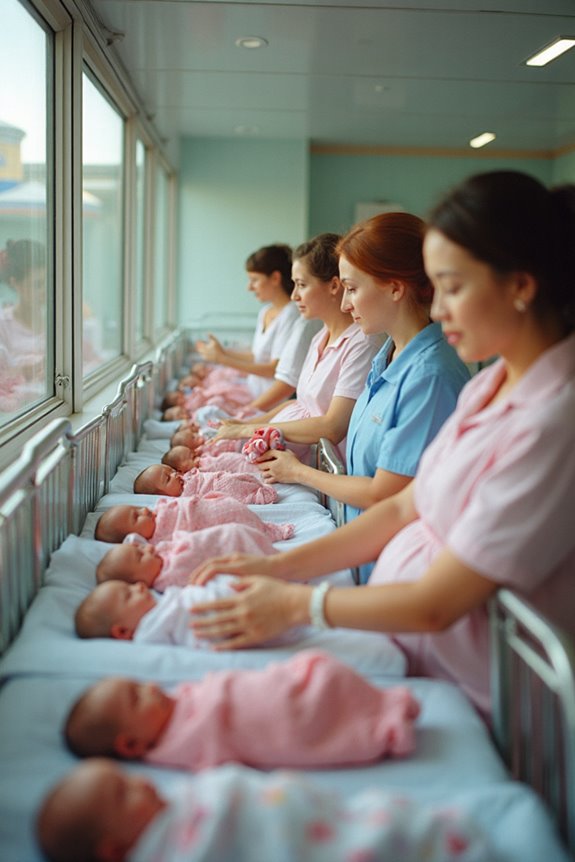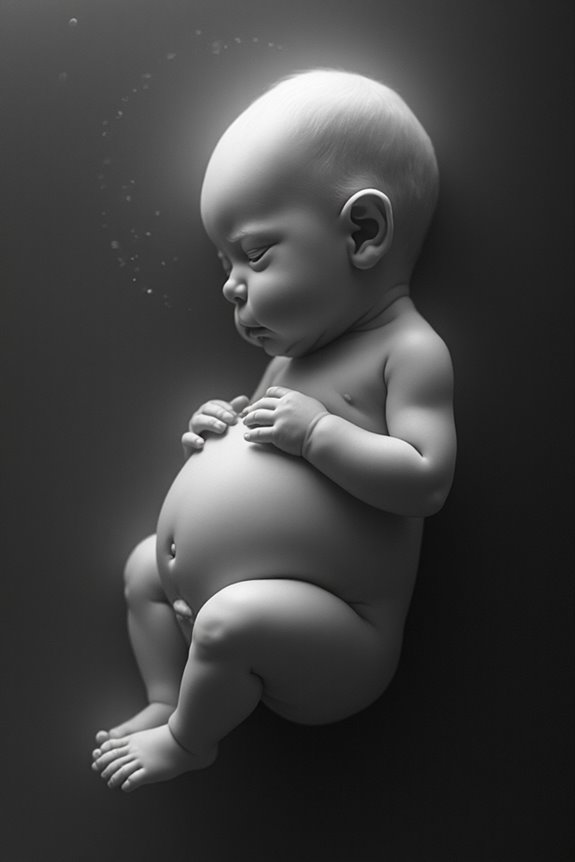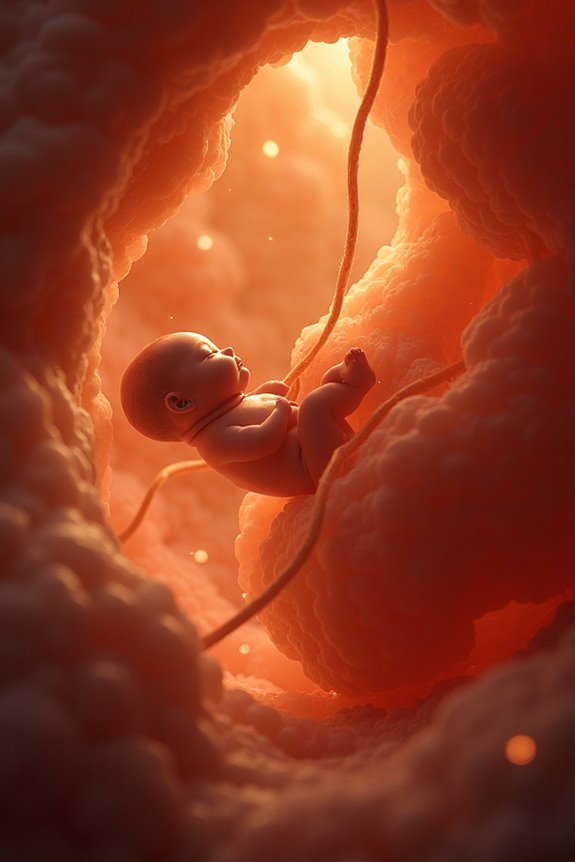We’re witnessing some shifts in birth statistics here in the U.S. Currently, about 3.62 million babies are born annually, with a birth rate of 11.0 per 1,000 people. Many families are opting for smaller sizes, often one or two children. Most first-time parents are now in their 30s. Factors like education and finances play a significant role in these choices. Curious about how these trends could shape our society? Let’s explore further.
Key Takeaways
- Approximately 3.62 million babies are born in the US in 2024.
- The birth rate for 2024 is 11.0 per 1,000 people.
- Birth rates slightly increased in 2022 and 2023 after previous declines.
- The fertility rate is projected to decline, impacting future birth numbers.
- Birth trends indicate smaller family sizes and delayed parenthood.
Current Birth Statistics in the US
When we talk about current birth statistics in the U.S., there are several key numbers and trends to consider. We had about 3.62 million births in 2024, just a tad higher than 2023. Yet, these figures remain among the lowest we’ve seen in decades. The birth rate, a mere 11.0 per 1,000 people, highlights this trend.
- Birth Order: Families are becoming smaller, with many opting for one or two children.
- Parental Age: More parents are waiting longer, with many first-time parents in their 30s.
Younger generations are choosing to have fewer children or delaying parenthood, influenced by educational and economic factors. As we navigate these shifts, understanding these dynamics helps us appreciate the evolving landscape of American families.
Annual Birth Rate Changes
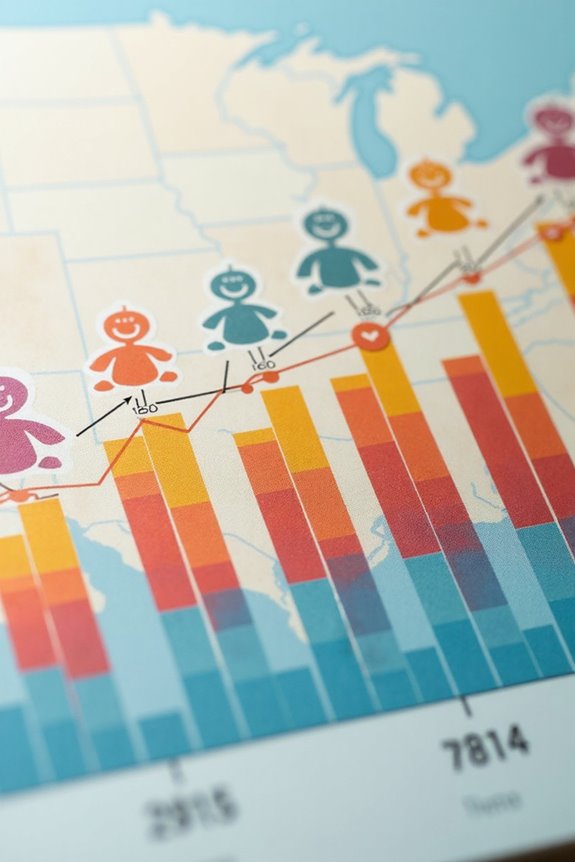
As we consider the current birth statistics in the U.S., it’s important to understand how the annual birth rate changes over time. We’ve seen birth rate fluctuations with a general decline, but slight increases in 2022 and 2023. These shifts come with societal implications.
- Economic and Social Factors: High living costs and student loans delay childbearing, while access to education reduces teenage pregnancies.
- Age-Specific Trends: Births have decreased among teenagers but increased for women aged 35-39, showing a trend towards delayed parenthood.
- Healthcare Improvements: Advances in healthcare contribute to healthier births and declining infant mortality rates.
Understanding these changes helps us grasp how economic conditions, societal norms, and healthcare advances shape our nation’s future. We should all be aware of these dynamics.
Fertility Rate Trends and Projections
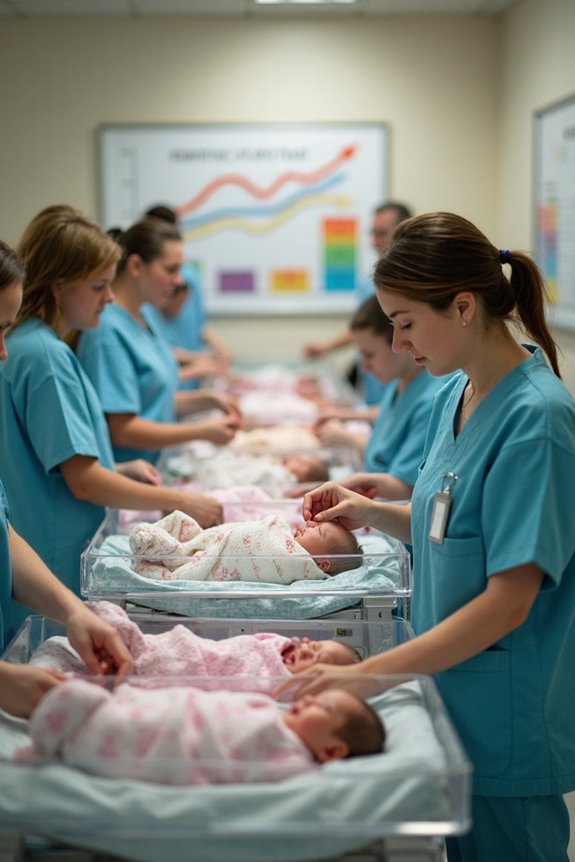
Let’s dive into the fascinating world of fertility rate trends and projections. We’ve seen a consistent fertility decline, with the 2025 rate at 1.79 births per woman, barely rising from 2023’s 1.78. Despite small increases, the overall trend is downward. Noteworthy points include:
- CBO projections suggest a drop to 1.60 by 2035.
- Birth projections indicate fewer young people by 2054.
- 2023 data shows a historic low, with a 2% drop in births.
The decline is across all major reproductive age groups. For instance, women aged 20–24 hit a record low of 55.4 per 1,000. It’s crucial to understand these shifts—they promise to reshape our demographic landscape. By keeping an eye on these trends, we can better prepare for the future.
Demographic Impacts of Birth Trends
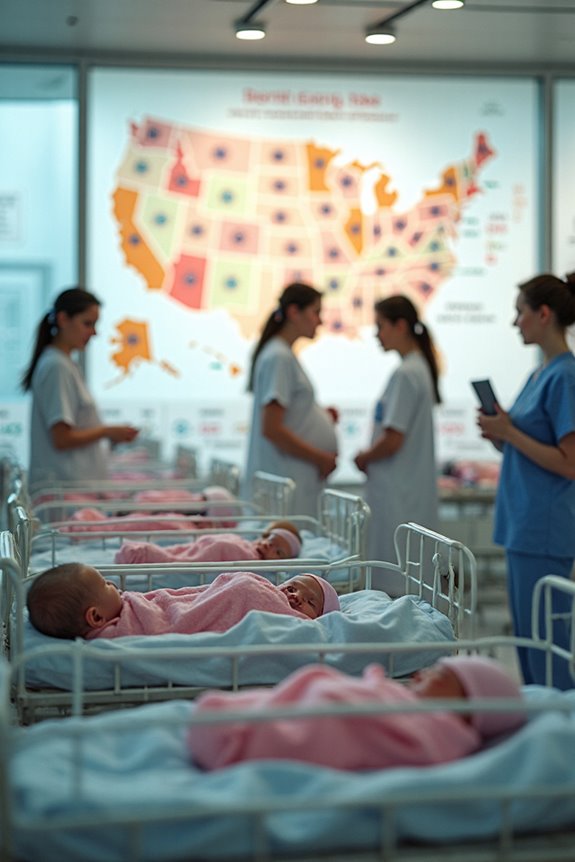
Though the changes in birth trends might seem distant, they have real implications for our society’s future. As we face a projected decline in the U.S. population, especially among younger age groups, we must consider how this affects family dynamics and societal shifts. Here’s what we need to know:
- Family Dynamics: Smaller family sizes are anticipated due to declining fertility rates, reshaping support networks for both the young and elderly.
- Societal Shifts: An aging population may lead to increased healthcare costs and fewer working-age individuals, impacting social security and economic stability.
- Labor and Education: Fewer births could mean fewer students and potential workforce challenges, altering educational and labor market landscapes.
Understanding these impacts helps us adapt to evolving societal needs and plan for a sustainable future together.
Age-Specific Birth Rates Analysis
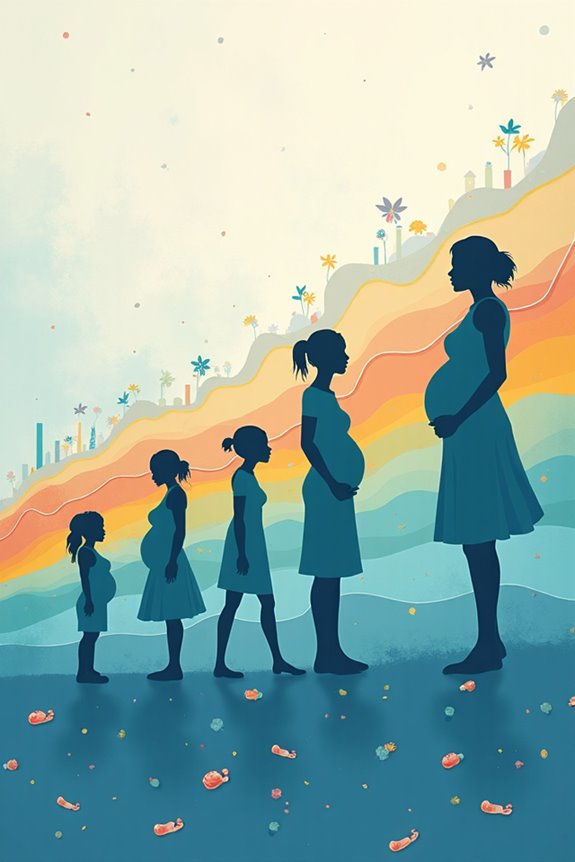
Understanding age-specific birth rates is crucial for grasping the evolving dynamics of childbirth in the U.S. We’ve noticed that teenage births have significantly declined, reaching just 13.5 per 1,000 girls aged 15-19 in 2022, due in part to enhanced education and access to contraceptives.
Meanwhile, there’s a fascinating trend toward delayed motherhood. Women aged 35-39 experienced a 2% increase in birth rates, thanks to improved fertility treatments and shifting societal views.
- Young adults (20-24) are having fewer babies, with a record low of 60.4 births per 1,000, likely influenced by economic pressures.
- Conversely, births among women aged 40-49 have risen, supported by advances in IVF technology.
These shifts reflect broader cultural and economic changes shaping family planning choices.
Health and Delivery Trends in Births

When we look at health and delivery trends in U.S. births, there’s much to consider. Recent data reveals a slight increase in birth rates, yet delivery methods are shifting. As we explore maternal health, we notice that access to quality care can impact outcomes significantly, especially with cesarean delivery rates rising to 32.4% in 2024. This shift may influence the frequency of vaginal deliveries, underscoring the importance of healthcare access.
For neonatal care, advances have improved outcomes for newborns, although specific statistics aren’t available. Ensuring that mothers and babies receive the best care possible remains crucial. Let’s remember that trends in maternal and neonatal health often reflect broader changes in healthcare and technology, shaping the future of how we welcome new life.
Economic and Social Influences on Birth Rates

As we delve into the economic and social influences on birth rates in the U.S., it’s clear that several factors come into play. Economic incentives and cultural influences are pivotal.
- Economic Factors:
- Financial stability impacts decisions. Economic uncertainty often discourages us from expanding families.
- Fiscal policies, like tax benefits, can sway our choices, potentially boosting birth rates.
- Social Factors:
- Cultural shifts, such as prioritizing education and careers, delay family planning.
- Changing family structures and support systems also shape our decisions.
We’re seeing fewer births among younger women, with a slight increase in older age groups. Additionally, ethnic and regional variations influence these trends. Understanding these dynamics helps us grasp the complexities behind birth rate fluctuations.
Frequently Asked Questions
How Does the US Birth Rate Compare to Other Countries?
Let’s explore the US birth rate together. In a global comparison, our fertility trends show we’re closer to replacement levels than Europe, but lower than Africa. Cultural and economic factors shape these trends worldwide. Curious, right?
What Is the Impact of Climate Change on Birth Rates?
We’re all affected by climate change, and it impacts birth rates indirectly. Climate policies and reproductive health access are crucial. Let’s prioritize these to ensure future families can thrive despite environmental and economic challenges. We’re in this together.
How Have Birth Rates Changed Throughout US History?
Let’s weave through the tapestry of time, where birth rates danced with history’s beats. Historical trends whisper change, while demographic shifts paint our shared canvas. Together, we’ve witnessed ebbing flows, shaping who we are, yet always evolving.
What Are the Cultural Factors Influencing US Birth Rates?
We often find ourselves influenced by cultural norms and economic stability when considering family planning. Our decisions on birth rates are shaped by financial security, education, and societal expectations, affecting how many children we choose to have.
How Do Birth Rates Affect the US Economy Overall?
We’ve got a wild ride, folks! Birth rates are the secret sauce for booming economic growth and a bustling labor market. Imagine the chaos if babies stopped arriving; we’d scramble for workers, and growth would sputter.

